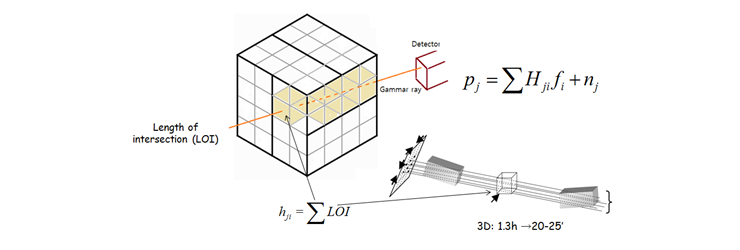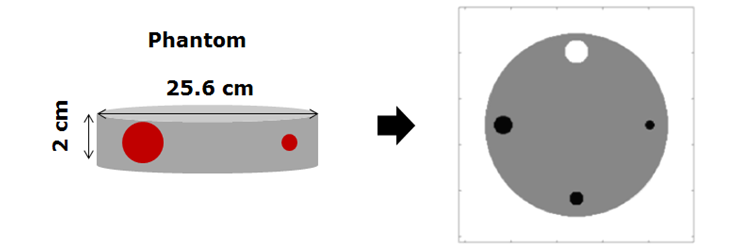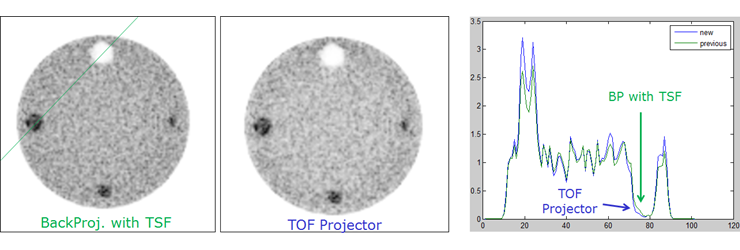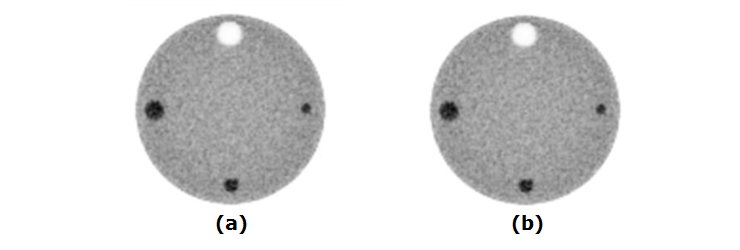ONGOING PROJECTS
- Development of Remote Radiation Detection Imaging System Mounted on a Drone
- High Resolution SPECT using Variable Pinhole Collimator
- Positioning Algorithm for CZT Virtual Frisch-grid Detector
- Multi-purpose Super-resolution Gamma Detector
- Multi-pinhole SPECT
- Low Profile Light Guide using Diffusion Film
- Advanced Reconstruction for Radiation imaging (ARRA)
COMPLETED PROJECTS
- Reconstruction of Dose Distribution in In-beam PET for Carbon Theraphy
- Image Registration for Breast Cancer Study
- High Energy Collimator Design for I-131
- Plasma-Display-Panel based X-ray Detector (PXD)
- CCD based Gamma Camera
- Abdomen Registration for PET/CT and MR images
- Performance Optimization by Patient Dose Analysis and Image Quality Assessment in CT Fluoroscopy
- Cone-beam based system matrix for a pixelated SPECT detector
- Development of Time-of-Flight Method for Improvement of Signal-to-Noise Ratio
Development of Time-of-Flight Method for Improvement of Signal-to-Noise Ratio
Introduction
Time-of-flight (TOF) reconstruction reduces the noise propagation along the line of response (LOR) during back-projection of data. The concept of TOF means simple for each annihilation event, we note the precise time that each of coincident photon is detect and calculate the difference that increases the quality of the reconstructed image. However the reconstruction algorithm still has some limitations, because on-the-fly method of the system matrix is very time-consuming. In order to reduce the reconstruction time, the current calculation method for the element system matrix is changed. Another limitation mentioned in previous research is that the calculation method of an element system matrix is very slow when ray-driven and using multi ray from a detector to image will increase computation quantity (especially with 3D reconstruction).
This study reports on a new method for 2D-3D medical image reconstruction. A new way to improve performance of system matrix calculation by finding similar line segments in the calculation process. This new method improves the system matrix value, increasing the quality of the image reconstruction. Simulation enables controlled experiments to be performed, with known standards used to validate newly developed algorithms for data processing.
Materials and Methods
For extending time-of-flight sinogram, we define the time spread function (TSF). The TSF is centered on the time bin and it is assumed to be a Gaussian with FWHM equal to the time resolution (1.2 ns in this case).
With the application of TOF, we devide LOR by n 'time bins' (in this study, 9 time bins were used), with each time bin responding to one segmentation. The TSF function was used for every pixel in that segmentation. Each one pixel TSF function is going respond a value, which is illusion of probability at this pixel. We can calculate the probability based on a TSF along the direction of the line of response identified by Introducing the TOF information in the reconstruction, the OSEM update equation remains unchanged, but the forward and back projectors are extended to include the extra TOF dimension.
The processing time for ray-driven method is very slow, so that acceleration of ray-driven approach is used in this study. Assume we have two parallel lines from the detector array. The distance between the two lines is h; is the angle between detector array and the y-axis; and d1 and d2 are two segmentation intersections between the two lines and pixels following the y-axis.

Fig. 1. Acceleration method of the ray-driven.

Fig. 2. Simulation specification of the scanner and phantom.
Results
To evaluate the image quality, we compare to the profile of the proposed TOF reconstruction image and back-projection with TSF image. For hot spots, it is better if the image has a higher value, and for cold spots it is better for the image to have a lower value. In the high noise case, we also simulated TOF-OSEM with 500k counts of sinogram, 15 iterations for TOF and TOF projector.
Fig. 3 is reconstructed image with 20 iterations of OSEM algorithms. The acceleration method was a significant improvement in performance. It took between 15 to 20 seconds to create the system matrix using the method, and between 120 and 150 seconds without propose method.

Fig. 3. The effect of the proposed TOF reconstruction method.

Fig. 4. The effect of the acceleration method, (A) with acceleration method, (B) without acceleration method.
Conclusion
The goal of this study is to incorporate accurate statistical modeling in the OSEM reconstruction algorithm used for whole-body PET imaging. Time-of-flight (TOF) reconstruction has been implemented in PET scanners with 2D-3D ordered subset expectation maximization (OSEM3D). With TOF, image reconstruction has a lower noise level and a more precise time resolution, as well as being more capable of resolving structures deep inside a large object. However, the program still has some limitations, on-the-fly methods of system matrix are takes a lot of time. In order to reduce simulation time, the calculation method of the element system matrix needs to be modified. Therefore, we have developed an acceleration method for the analytical calculation of the 2D-3D shape based on the volume of the length of intersection (LOI). This method provides a robust alternative process for system matrix calculation. This improved calculation speed of image reconstruction. By using the new system matrix calculation, we can get better results (faster scan time and high contrast). This promising new method will serve to improve the quality of PET images.
Participating Researchers




